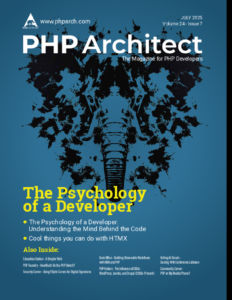This month, I’m introducing a new series of articles to show how to build a data processing workflow using n8n, MySQL, and Laravel. A key feature is building in workflow observability from the outset. by Edward Barnard
How hard is it to create a mobile app for this?….Very by Scott Keck-Warren
You know what I absolutely love? Having my data and content locked up in siloed platforms that refuse to talk to each other. It fills me with such joy knowing that if someone wants to do something like read an old tweet of mine, they have to go to a platform that I no longer support or interact on, and that it is tough to get the ideas and quips that I wrote out of it to move them somewhere else. Having a huge corporation decide how people can interact with my content is just what I wanted. by Chris Tankersley
People gather for a closing talk. The organizers say a few words. Friends, both old and new, say their goodbyes. Cue The Letdown – it is just around the corner. by Chris Hartjes
In the early 2000s, the web development landscape underwent a significant transformation with the rise of Content Management Systems (CMSs) built with PHP. A Content Management System (CMS) is a software application that enables users to create, manage, and modify digital content without requiring specialized technical knowledge. This innovation reduced the reliance on hand-coded websites, making web development accessible to non-technical users and revolutionizing the way websites were built and maintained. by Christopher Miller
Over the past two months, we’ve explored key exchange protocols—first with traditional Diffie-Hellman and then with elliptic curves. The advantage of studying elliptic curves is that understanding how to use them in other contexts becomes more straightforward. It’s not “easier,” but seeing how the same underlying mathematics can be applied to different problems should make more sense. by Eric Mann
When it comes to improving application performance, opinions and assumptions are everywhere—especially in PHP circles. But hand-waving about micro-optimizations or quoting Big-O complexity doesn’t help when you’re faced with a slow page load or sluggish process. To make informed decisions, you need real numbers. You need to benchmark how fast it runs and keep historical records. by Oscar Merida
HTMX is a JavaScript library that adds superpowers to HTML. While other libraries go with creating a custom markup language (JSX) or adding JavaScript on the side (Vue). HTMX brings so much extra functionality using HTML attributes. by Nelson Isioma
In the ever-changing world of software development, we developers are often seen as logical, methodical individuals who only speak in code and think in perfect algorithms. That might be true for some of us; however, beneath the surface of syntax, frameworks, and languages lies an interesting psychological picture that shapes how developers approach problems, collaborate, and navigate the sheer complexity of modern software development. by Christopher Miller






Responses and Pingbacks
August 1st, 2025 at 7:02 am
Just popping in to say, “THAT COVER FREAKIN’ ROCKS!”
-Kevin Bruce
August 5th, 2025 at 10:53 am
Thank you Kevin! Hope you’re doing well.